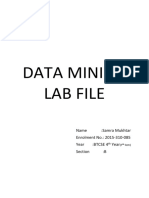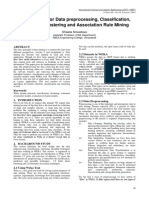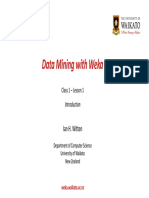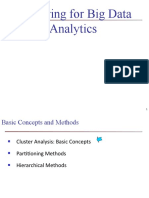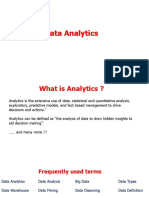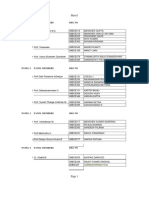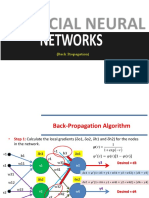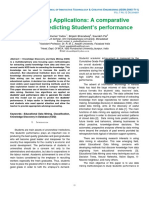Data Mining Solution with WEKA
Course ID : PHI-BI-004 Platform : Windows http://www.phi-Integration.com
�Data Mining Solution with WEKA
Data Mining Solution with WEKA
I. Introduction
With the growing complexities data in terms of size and dictionary structures, organizations are challenge to dig deeply into the data to find useful information or to gain hidden predictive informations from it. Using a powerful analysis or OLAP solution is not enough since it will depends on a good analysist and usually takes time. Data mining application with advanced algorithm is the answer to the problem of finding useful hidden pattern. WEKA is the open source machine learning tool which has evolved into a practical data cost efficient mining tool. With a growing powerful algorithms and features, WEKAs adoptions into mainstream is undoubtable. Combining with statistical skills, using data mining application likes WEKA requires the knowledge of problem domain and which algorithms better cope with them. This course is designed for this.
PHI-Integration.com
Page : 2 / 5
�Data Mining Solution with WEKA
II.
Who Should Attend ?
This course is designed for Business Analysts, IT developer, Database Administrator and those who new and interest to data mining and predictive analysis.
III.
Objectives
At the completion of this course, attendee should be able to : Understand the practical usage of data mining. Use Weka tools to recognize and use algorithm. Recognize suitable algorithms to solve problem. Able to automate the data mining flow.
IV. V.
Course Duration
5 days / 30 hours
Course Prerequisites
Basic understanding one of several popular DBMS (Oracle, SQL Server, MySQL, etc) and Structured Query Language (SQL). Basic understanding of statictic concepts (data sampling, standard deviation, etc).
VI.
Course Resources
PC or Laptop with minium of 2GHz CPU, 1 GB of RAM, DVD Drive and 2 GB of available hard disk space. Softwares : Windows XP Pro Operating System Java Runtime Environment (JRE) MySQL 5.0 Database Server Open Office Calc. WEKA Data Mining Application.
PHI-Integration.com
Page : 3 / 5
�Data Mining Solution with WEKA
VII.
Course Outline
1. Data Mining and WEKA Data Mining. Machine Learning. Supervised and Unsupervised Learning. Data Mining Algorithms. WEKA as machine learning application. Dataset Sample. 2. Weka Application and Components Installation. Weka Components Explorer Experimenter KnowledgeFlow Simple CLI 3. Preprocess (Data Preparation) Weka Explorer s Preprocess Dataset, Instance, Attribute, Class Attribute and Data Types Data Input Format ARFF (Attribute-Relation File Format) CSV (Comma Separated Value) Database Tables Access Data Population Statistics Practice : Opening and Exploring ARFF Data Practice : Data Transformation Practice : MySQL Database Access Filtering Practice : Removing and Discretize Attributes Using Filter 4. Data Visualization Visualize Data and Data Mining Results Practice: Explore Data Visualization Types Jitter to Help Visualize Nodes Practice : Using Jitter with Heavily Populated Data Missing Value
PHI-Integration.com
Page : 4 / 5
�Data Mining Solution with WEKA
5. Classification What is Classsification ? Classfication Types : Decision Tree Decision Tree Algorithm : J48 Practice : Pattern classification using J48 User Classifier Practical : Decision Tree dengan User Classifier Exporting and Importing Object Model as Pattern Result 6. Association Rules Association Rules to find sequence or dependency data. Association Rule algorithm : Apriopri. Practice : Using Apriori to solve market basket analysis problem. 7. Clustering Finite categorization with Clustering. What is K-Mean Clustering ? K-Mean implementation using SimpleKMean algorithm. Practice : Cluster heavily populated data with many attributes. 8. Experimenter Experimenter to compare several Object Model predictions. Object Model and experiment configurations. Practice : Compare results on several object models from previous exercises. 9. Simple CLI SimpleCLI and Java Command. Benefits of using SimpleCLI. Practice : Using SimpleCLI to generate Decision Tree Object Model. 10. KnowledgeFlow KnowledgeFlow as automation tool to do data acquisition, pattern recognition and producing prediction result. Calling knowledgeflow from Java command line interface. Practice : Design and calling knowledgeflow.
PHI-Integration.com
Page : 5 / 5



